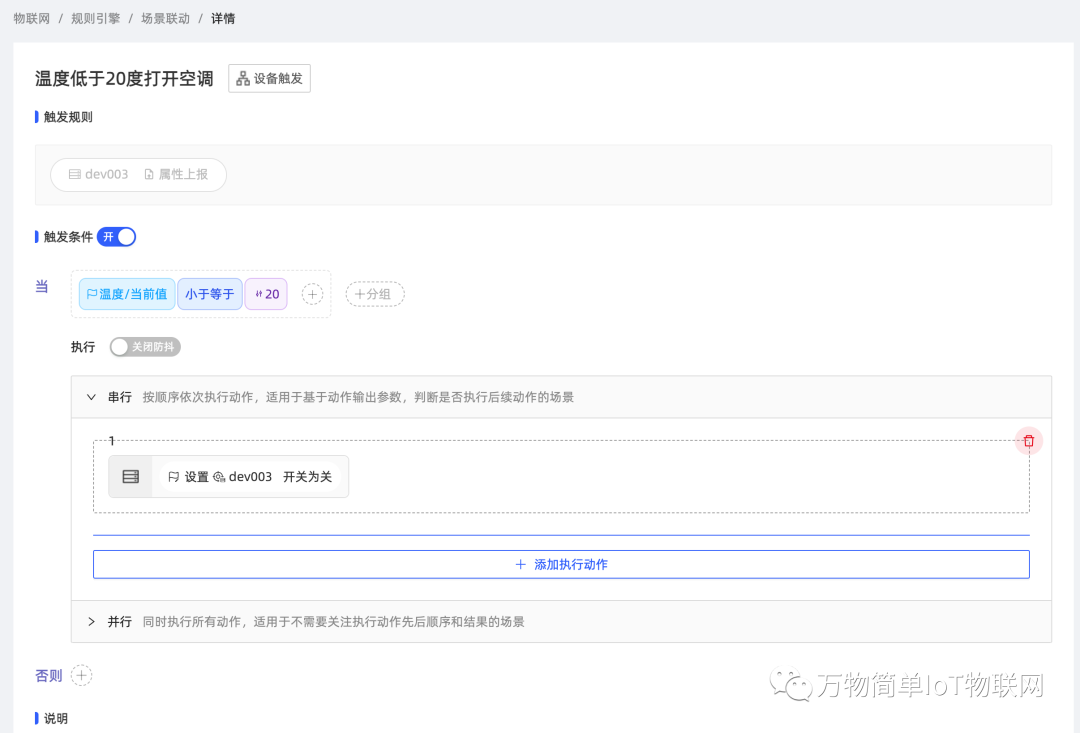The Simple IoT is a service platform that integrates IoT education and enterprise SaaS private deployment. It encompasses a series of core IoT capabilities including device management, secure data communication, message subscription, and rule engine, supporting cloud data upload and connection of massive devices. It provides cloud APIs for remote control through API calls. The Simple IoT platform supports multiple device access protocols (MQTT, UDP, TCP, HTTP, etc.) and offers a rich protocol library.

Experience Center
Product Function Overview
Device Access
Supports multiple protocols (MQTT, HTTP, CoAP, UDP, TCP, WebSocket); self-developed edge gateway access. It meets the requirements of various access scenarios in the IoT platform, shortening the development cycle for IoT device access.
Device Management
Provides full lifecycle management of devices, supporting real-time data display and historical data aggregation statistics; device diagnostics, message link tracing; complete logging of device operations, etc.

Device Diagnostics
Rule Engine
Provides rule engine services. Implements backend processing logic, supports real-time data processing with SQL syntax; scheduled tasks; subscription and publishing of message queue data; rule engine database storage; notification of rule exception data, etc.

Rule Engine Configuration Interface
Operation and Maintenance Monitoring
Supports circuit breaker and flow limiting after functional anomalies at the system level; supports data caching when executing business logic with large data concurrency; supports access logs and system log queries;
Business-wise, it provides OTA remote upgrade for devices; offers real-time monitoring of devices, etc.
Business Processing
Supports device data configuration scenario linkage processing based on scheduled tasks and flexible conditions.

Scenario Linkage
Data Storage
The Simple IoT platform provides various data storage support.
-
Time Series Database: The platform supports data storage middleware such as Elasticsearch, ClickHouse, InfluxDB, TDengine, Cassandra, etc., allowing dynamic selection of which middleware to store device data.
-
Relational Database: Supports PostgreSQL, MySQL, etc.
-
In-Memory Database: Redis.